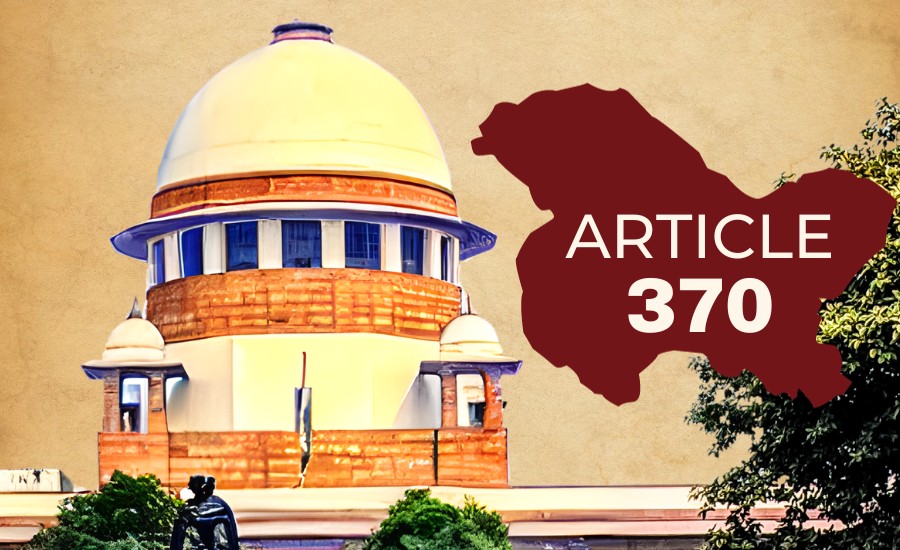The recent decision by the Supreme Court of India to uphold the abrogation of Article 370 has sent ripples through the political and legal landscapes of the nation. This verdict which upholds the government’s move in 2019 to revoke the special status of Jammu & Kashmir, has far-reaching implications for the region and the country as a whole.

Article 370, a provision enshrined in the Indian Constitution, granted special autonomy to the state of Jammu & Kashmir. This unique status allowed the region to have its own constitution and decision-making powers, excluding matters related to defence, communications, and foreign affairs. In 2019, through Constitutional Orders 272 and 273, the President of India abrogated Article 370, effectively stripping Jammu and Kashmir of its special status. The recent decision and the court’s interpretation of the constitutional intricacies surrounding Article 370 has set a precedent, redefining the balance between regional autonomy and national integration.
Proponents of the government’s move argue that the abrogation of Article 370 was a crucial and final step towards unifying the diverse states under the Indian Union. They contend that special privileges for certain regions could impede the nation’s progress and hinder the realization of a truly united India. On the other hand, parties challenging the abrogation claimed that the Union broke the constitutional promise made to the people of Jammu & Kashmir for self-governance and internal sovereignty under Article 370. Further, they argued that Article 370 could not be abrogated after the dissolution of the J&K constituent assembly in 1957. The Supreme Court, in a unanimous judgement held that Article 370 was a temporary provision designed to tackle the political and civil unrest in the Valley soon after partition. They agreed with the Union’s explanation that over the years the region has successfully moved towards national integration, slowly shedding the elements of its “special” status. With national integration as the primary goal, the Court held that all actions taken by the Union were justified.
While recognising the legitimacy of the Union actions, the Court also gave an expansive reading of the President’s powers to take control of states under President’s Rule. By allowing the Executive head to make “irreversible changes” under President’s Rule, the Court accepted the presidential authority to unilaterally dissolve state legislative assemblies. Further, the Bench held that the dissolution of the J&K Constituent Assemble doesn’t restrict the President’s power to abrogate Article 370, asserting that it was introduced to address the special circumstances prevailing in the state. This rationale, while legally sound, raises questions regarding the potential misuse of presidential powers.
The examination of Constitutional Orders 272 and 273 further deepens the complexity of the judgment. The Court invalidates a part of CO 272, deeming the amendment to Article 367 unconstitutional for not following due procedure for amendment provided in Article 368, part XX of the Constitution. However, it upholds the overarching application of the Indian Constitution to Jammu & Kashmir under Article 370(1)(d). This selective validation prompts a closer look at the judiciary’s scrutiny of executive actions and the delicate balance of power between the Centre and the states.
The judgment’s positive interpretation of the President’s unilateral power to abrogate a provision in a state that gives it its special status raises concerns about potential abuse of executive authority. One would be wise to worry about the implications of this in other states where the Union and the state maintain a delicate and distinct balance of powers.
Another aspect of the judgment is the fate of Jammu and Kashmir’s statehood under the J&K Reorganisation Act, 2019, which adds a layer of ambiguity. The Court, while directing the restoration of statehood, conveniently leaves the question of the region’s “character” as a state or Union territory, open-ended. This deliberate ambiguity raises questions about the long-term implications of the reorganization and the potential for constitutional uncertainties in the future. Could this mean that under President’s rule, the Union Executive head can split any state into a UT?
The Abrogation of Article 370 also has geopolitical repercussions, especially in the context of our neighbour, Pakistan. This decision has been met with obvious discontentment from Pakistan which has consistently contested India’s decisions in the region since 1947. The Supreme Court’s support for the government’s decision introduces a legal perspective into the ongoing geopolitical saga, influencing the narrative of the dispute. Internationally, the decision has elicited varied reactions, with some nations expressing concern over the potential impact on regional stability. The global community continues to observe how India navigates the challenges and opportunities that ensue from this significant constitutional shift.
The Supreme Court’s decision on Article 370 marks a pivotal moment in India’s constitutional history. It has not only settled a contentious legal issue but has also reignited debates on the delicate balance between national integration and regional autonomy. As the nation grapples with the aftermath of this verdict, it is imperative to reflect on the evolving dynamics of governance, identity, and unity in the diverse tapestry of India.

